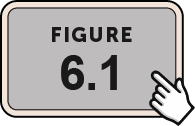Show Navigation Menu
Section Two : Becoming a Researcher/Scholar
Introduction | Definitions of Critical Thinking | Critical Thinking in Practice |
Metacognition | Comparative Analysis and Comparative Research | Conclusion | References
Chapter 6: Critical Thinking: The Means to Inquire
Hide Navigation Menu
Home Page
Section 2 Becoming a Researcher/Scholar / Chapter 6 Critical Thinking: The Means to Inquire

Metacognition can help to define an area of focus and transfer emphasis to specific areas of thought, engaging critical thinking.

Figure 6.1: Bloom's Taxonomy Graphic
4. Metacognition
Metacognition, as a practice, asks the participant to be aware of and take into account his or her own knowledge foundations while looking across wide information sources to provide a glimpse of factors existing in the larger picture. Metacognition can help to define an area of focus and transfer emphasis to specific areas of thought, engaging critical thinking. Metacognition provides the opportunity to take multiple factors and characteristics of human behavior and outcomes into account. In doing so, scholars are bringing multiple perspectives into the conversation, which provide a diversity of observations, experiences, and applications of research to draw upon. Metacognition can help provide platforms on which to cross-examine phenomena in various contexts.
Characteristics of Critical Thinking
As many definitions of critical thinking exist, there are equally as many examples of characteristics of critical thinkers. Among other characteristics, critical thinkers
• are committed to a given task. Their commitment to engaging in a task is not contingent on feelings associated with the task. Critical thinkers' commitment is based on an objective decision to dedicate time and effort to completing a given task (Blasi & Oresick, 1986; Marzano, 1988).
• are persistent. Just because critical thinkers do not find the answer to a question immediately does not mean they give up. They try a different key word or search engine.
• learn from failure. Persistence and learning from failures go hand in hand. Why repeat the same actions if the outcome is the same? Critical thinkers try again, and look for another way to the other side.
• are resourceful. Critical thinkers seek support when they need it, not when they run out of options. Being resourceful means being aware of available support options and calling upon them as a means of getting ahead, not catching up.
• work beyond their limits. This does not mean they work to the point of exhaustion, but, instead, continue to press ahead to produce more than they thought possible.
• present clear and concise questions. Clear answers need clear questions. This is a process and may take time to refine, but it is a necessary part of developing clear and concise commentary on a given subject.
• are consistent in applying the same effort, scrutiny, and processes across multiple tasks, such as reading, writing, note-taking, citing sources, and formatting references among others. Critical thinkers find what is successful and continue doing it.
• are focused and revisit the bigger picture. These terms work hand in hand. Focused research, writing, or analysis should clearly and visibly tie into a larger conversation of which a critical thinker's work is a part.
• are open-minded. This doesn’t mean taking everything into consideration when examining problems or questions, because everything may not be relevant. However, this may mean confronting assumptions about what critical thinkers know and what they think they know.
Learners can think about these processes in the context of their doctoral journeys this way: Over the course of time and practice, learners should shift their approach to new information and their place within that information from a position of casual observer to informed participant within a set of academic processes (research, writing, analyzing, and discussing) as a means of presenting new insights. Doctoral learners should aim to move from being students completing academic tasks to scholars and experts making substantive contributions in their chosen fields. This process unfolds differently for each scholar and researcher. Critical thinking in part allows us to develop our research and writing skills to meet our expectations of personal and academic success as well as the expectations of doctoral scholarship accordingly.
Models of Critical Thinking
Critical thinking, as a process, does not have to be relegated to a particular model, scale, or construct. That is, there is not a single, best model to describe a good critical thinker or, conversely, describe a person who lacks characteristics of critical thinkers. Rather, developing critical-thinking skills can be presented and discussed as a process that can be followed in order to more consistently and thoroughly engage critical-thinking practices. As with a doctoral journey, these practices can be pictured as stages of development. For this reason three particular models are presented as examples of critical thinking in developing stages: Kolb’s (1984) Experiential Learning Model, wherein learning is conceived as a process, not as a set of definitive outcomes; Bloom's (1956) Taxonomy of Higher Order Reasoning, which classifies thinking within levels of intellectual behaviors; and Kitchener and King’s (1981) Reflective Judgment Model, which describes changes in cognitive reasoning.
These particular models of thinking provide an active illustration of moving from simple engagements with new information to more advanced and in-depth examinations of new ideas and framework. An examination of Kolb’s (1984) Experiential Learning Model, Bloom's (Bloom & Krathwohl, 1956) Taxonomy of Higher Order Reasoning, and Kitchener and King’s (1981) Reflective Judgment Model runs alongside expectations of doctoral learners: There should be a fundamental shift from completing simple academic tasks to becoming expert researchers, scholars, and writers who make substantive contributions to a chosen field.
Experiential Learning Model
Kolb (1984) presented four stages of information acquisition in which the learning process includes differences in individual learning styles and learning environments. The model itself posits development is attained by a process of higher level integration and application and understanding of information in the moment. Essentially, Kolb places a premium on experience as a primary source of conceptualizing information in higher level orders, realized in the subsequent choices made when engaging new experiences and sources of information. The first step, a concrete experience, is positioned as a space through which people encounter new information by testing their acquired knowledge and understanding. This first step in the process is realized fully when learners open themselves to the opportunity to engage themselves fully to a new experience. The second step in the model, reflective observation, positions learning as a function of reflecting on information from different perspectives, supporting a wider engagement with both the immediate source of information as well as a broader set of possibilities. Abstract conceptualization describes the formation of new ideas and concepts drawn directly from engagement with a core experience—a transition from observation to logical and clear assumptions. The final stage, active experimentation, brings Kolb’s model full circle, as learners realign their knowledge frameworks and then test their new knowledge to make decisions and solve problems.
Kolb essentially provides a framework to understand processes involved in using preexisting knowledge to interpret an experience, create new knowledge, and engage new knowledge in new experiences.
Bloom’s Taxonomy
Bloom (Bloom & Krathwohl, 1956) posited a hierarchy of three basic thinking behaviors followed by three higher order thinking behaviors. The most basic form of knowledge acquisition is remembering small pieces of information. Understanding and explaining information or concepts is followed by the ability to apply knowledge across multiple contexts. Bloom positioned the ability to analyze information in the first of his higher order thinking behaviors, followed by the ability to synthesize ideas and information to create new ideas. The ability to evaluate information sits atop Bloom’s hierarchy, as information is formed fully and justifiable.
Reflective Judgment Model
Kitchener and King's (1981) seven-tier framework considers assumptions people make about their own knowledge and how knowledge is acquired. The model attempts to provide a measure of individual ability to solve well-structured and ill-structured problems. As discussed by King, Wood, and Mines (1990), well-structured problems have a high degree of certainty associated with their outcomes. For example, fragile objects break when dropped. An egg is fragile; therefore, an egg will break when dropped. Ill-structured problems, on the other hand, are more difficult to describe with a high degree of certainty or finite terms. For example, what should or should not be considered in the Common Core Standards curriculum of K-12 education: the effects of deforestation in the Amazon to develop medical cures from indigenous plants or the development and sustainability of alternative energy resources, such as solar, wind, and thermal? These discussions involve multiple considerations that change complexion and complexity depending on the variables and context in which they are evaluated.
Individuals who fall into the first three levels of Kitchener and King’s (1981) model perceive truth and fact as existing more or less in black and white; there is true, there is false, there is good, there is bad. Generally, there is no ability for people who fall in the first level to differentiate between well- and ill-structured problems, viewing each as though they were defined with a high degree of certainty and completeness (Kitchener & King, 1981). Individuals in the fourth and fifth stages assume knowledge is gained individually through evaluating available evidence. Knowledge acquisition is positioned as unique to each individual: We are different; therefore, we acquire knowledge differently. People holding these assumptions can decipher difference in problem type but have difficulty solving ill-structured problems. Those in levels six and seven reflect the most advanced set of assumptions regarding knowledge acquisition. In these final two stages, commentary must be grounded in data, and, more importantly, the commentary itself must meet standards for clarity and soundness. “Certainty of judgment may be high but not absolute, and judgments are open to change if new data or new ways of interpreting the data become available” (King, Wood, & Mines, 1990).
Metacognition, critical thinking, and models of thinking, are linked in the way of direct, continuous, and sustained engagement with critical-thinking behaviors. These behaviors are part of what could be considered scholarly dispositions. Referring back to the doctoral dispositions discussed in Chapter 3, there mightlikely be found connections between the doctoral dispositions and those behaviors commonly associated with critical thinking.